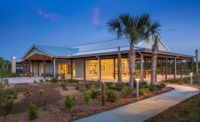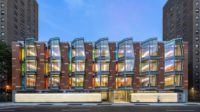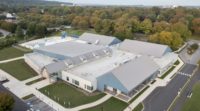Building Integrated Photovoltaic Installed at Nature Center






City of Torrance California recently completed a BIPV canopy addition to the courtyard portion of the Madrona Marsh Nature Center. The canopy will collect sunlight to help offset power consumption.
The Madrona Marsh is a wetland called a “vernal marsh.” Vernal meaning the wetlands do not have a built-in water source. Winter and Spring rains are the only source for water at the marsh. When enough water accumulates, it becomes a resting spot for migrating bird, insects, frogs, reptiles and small mammals.
Directly across the street is the Nature Center where visitors can learn about the marsh and its inhabitants. The City of Torrance with help from sponsors and donors recently added a building integrated photovoltaic canopy which will serve as the ceiling and natural light source for the new Butterfly exhibit and save on the facilities utilities usage.
The structure was designed by managing principal, Segun Abegunrin of SAA Associates in Pasadena. Manufacturing was done by Skyco Skylights, a building integrated photovoltaics manufacturer located in Costa Mesa, CA. Skyco Skylights also builds industrial skylights and custom structural skylights.
The canopy is 500 square feet; 50% is amorphous silicon photovoltaic glass with 20% transparency supplied by ONYX Solar of Spain. The other 50% is standard laminated tinted glass as the perimeter. Amorphous silicon glass serves two functions; 20% light passes through to help daylight the exhibit area while the balance of sunlight is utilized to generate solar power.
Building integrated photovoltaic is one of the hottest technologies amongst Architects and Green Building Developers. The multi-faceted glass contributes significantly to Net Zero Building Design as well as LEED credentials.
“The photovoltaic structure is quite an innovative addition to the nature center,” explains Paul Simony, building integrated photovoltaics specialist at Skyco Skylights. “Management was looking for a creative solution to enclosing the courtyard and the BIPV system is the most efficient solution for that goal.”
The area below the canopy will be used for educational demonstrations for local students. Butterflies will fly freely around the open space while students can observe them. The transparent photovoltaic glass help create a natural habitat for the butterflies.
Looking for a reprint of this article?
From high-res PDFs to custom plaques, order your copy today!









